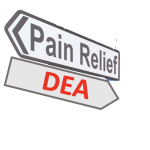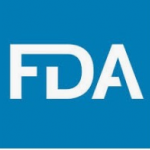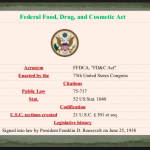In a recent New York Times essay, a professor of anesthesia and pain management recently protested the Drug Enforcement Administration's opioid manufacturing quotas and micromanagement of doctors treating their patients' pain. At a time when DEA S.W.A.T. teams frequently raid doctors' offices for "inappropriate" prescribing, the professor's essay demonstrated boldness. Unfortunately, the professor's reform proposals were much less bold.
New York Times
In a recent article in the New York Times about fraud in the dietary supplement industry, Rina Raphael recognized ACSH's work in the field by quoting Josh Bloom, the director of chemical and pharmaceutical science. We all thank Ms. Raphael for using ACSH as a resource.
Thirty years ago, the Natural Resources Defense Council (NRDC) launched a PR campaign against a plant-growth regulator called Alar, effectively eliminating the use of the chemical in agriculture. What's the legacy of this infamous anti-chemical scare? The New York Times continues to attack good scientists on the say-so of environmental groups. The paper is trashing its credibility.
The New York Times has again attacked an upstanding scientist based on claims made by duplicitous activist groups. This episode illustrates why the public's trust in media is plummeting.
You can be blindfolded, throw a stone, and probably hit a writer who gets the opioid crisis all wrong. Today, let's throw one at German Lopez of The New York Times.
Has the New York Times, which has been squarely in the 'No GMO' column for many years, moved into this century? Drs. Kathleen Hefferon and Henry Miller argue yes, but not nearly enough so to make up for past misrepresentations about genetic modification.
Three well-known anti-GMO groups have attacked the New York Times for publishing a generally excellent story about crop biotechnology. Natural News, for example, called the article "pure propaganda masquerading as journalism." Unsurprisingly, Natural News is wrong.
Bari Weiss, a New York Times opinion writer, quit her job following relentless defamatory, bigoted, anti-Semitic, workplace bullying from her super-woke colleagues. And workplace bullying is a lot more common than one might think.
New York Times journalist Eric Lipton, who defended the indefensible by offering support to a group of virulent anti-vaxxers and scam artists known as Moms Across America, is a scourge on public health. The national newspaper recently demoted Jonathan Weisman, a deputy editor based in Washington, DC, for displaying poor judgment. Lipton should face the same fate.
The New York Times ran an Op-Ed about the wellness industry that asked, "Why are so many smart women falling for its harmful, pseudoscientific claims?" Gee, maybe it's because they also read about the benefits of witchcraft in the very same newspaper?
Dr. Henry Miller, a former FDA deputy commissioner, used to be a big fan of the New York Times' coverage of science and medicine. But no longer. He takes issue with an editorial that accuses the agency of reducing its scrutiny of new drugs. Dr. Miller explains why the Times is off-base: the development of precision medicine.
The editorial board of the New York Times came out in favor of revising FDA regulations of cosmetic products. This is a reasonable suggestion since such a review has not taken place since 1938. But sound science, especially toxicology, is essential for any change in regulations to be meaningful. Unfortunately, on the science itself, the newspaper's proposal misses the mark.











